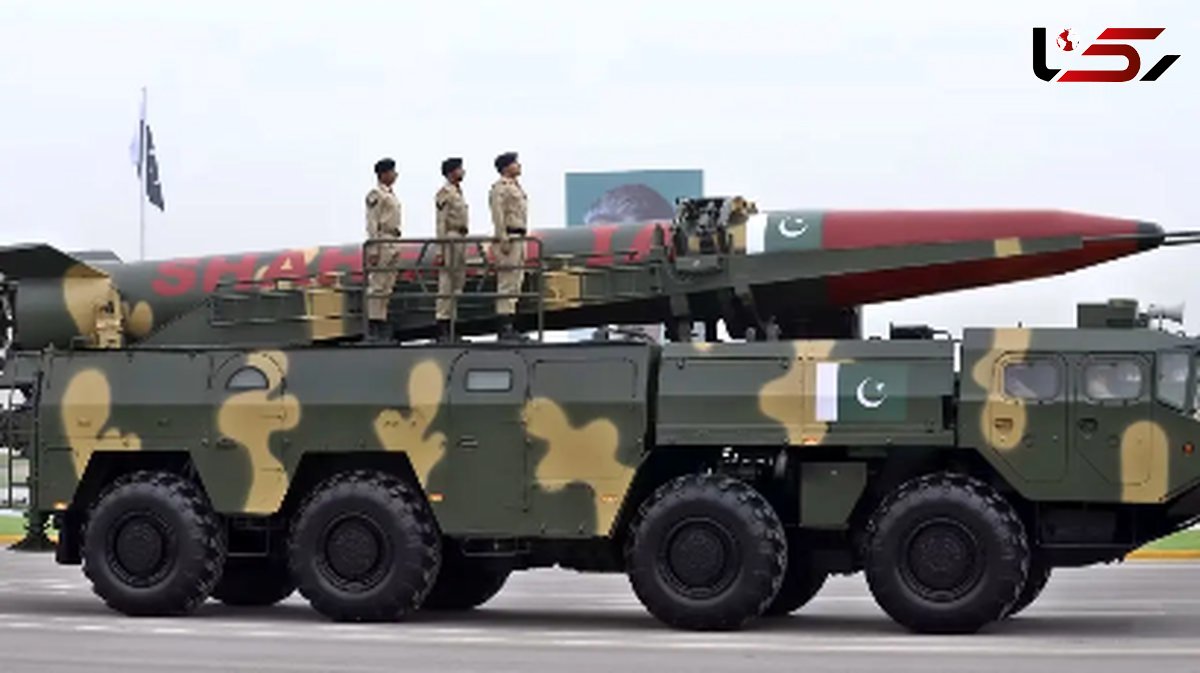Behind the Saudi-Pakistan Mutual Defense Agreement: Are Nuclear Missiles Involved?
Rokna Political Desk – Saudi Arabia and Pakistan, by signing a new security treaty amid regional tensions in the Middle East, have taken a strategic and controversial step. Will this military agreement help stabilize regional security or exacerbate tensions?

On Wednesday, Saudi Arabia and Pakistan signed a security agreement in Riyadh, whose most significant provision is the firm defense of one another in the event of an external military attack. In today’s volatile Middle East, this treaty serves less as a mere pact and more as a warning for imminent developments.
According to Rokna, in a region shaken by recurring tensions – from alleged Israeli attacks on Qatar to the looming shadow of war over Iran’s nuclear program – the signing of the “Strategic Mutual Defense Agreement” (SMDA) between Pakistan and Saudi Arabia on September 17, 2025, acts as a spark in the geopolitical tinderbox. This pact, signed during Pakistani Prime Minister Muhammad Shehbaz Sharif’s official visit to Riyadh, not only demonstrates preparedness for potential future developments but also sends a clear message to global powers: the era of unilateral dependency on the United States has ended.
Saudi-Pakistan Mutual Defense Agreement
The SMDA, signed by Prime Minister Sharif and Saudi Crown Prince Mohammed bin Salman, was described in a joint statement by Pakistan’s Ministry of Foreign Affairs and the Saudi Press Agency (SPA) as “a historic step to strengthen joint security.” The agreement, signed in the presence of senior military officials including Saudi Defense Minister Khalid bin Salman and Pakistan Army Commander General Asim Munir, is grounded in Islamic brotherhood and shared strategic interests. Beyond rhetoric, its operational clauses provide a solid framework for defense cooperation.
At the core of the agreement is the provision: “Any aggression against one of the two countries shall be considered aggression against both.” This obligation makes mutual defense against external threats mandatory and places Saudi Arabia – for the first time – under Pakistan’s nuclear umbrella, the only Islamic nuclear power. A Saudi official told Al Jazeera: “This agreement is comprehensive and encompasses all defensive and military tools based on specific threats.” The provisions of the agreement resemble those of NATO.
Behind the Saudi-Pakistan Mutual Defense Pact
While the appearance of the treaty conveys Islamic solidarity, behind it lies a story of complex geopolitical calculations. The SMDA was signed amid Middle Eastern tensions – including recent Israeli strikes on Qatar and rising tensions with Iran – and is far from coincidental. Analysts have termed it “America’s special moment”: the point at which Saudi Arabia, historically a U.S. client state, has turned toward independent options.
Key Motivations:
-
Frustration with U.S. Security Guarantees: The Israeli attack on Doha, carried out without serious Washington response, served as a wake-up call for Riyadh. Sources indicate that Saudi Arabia is angered by U.S. “inaction” in support of Gulf allies, especially after failed negotiations for a defense pact with Washington. This agreement sends a direct message: Riyadh will no longer wait under the U.S. “security umbrella.” A senior Saudi analyst told Reuters: “We have alternatives, and Pakistan is one of them.”
-
Shared Threat from Israel and the Need for a Nuclear Deterrent: Given Israel’s recent attacks on Iranian and Qatari nuclear facilities, Saudi Arabia seeks Pakistan’s “nuclear umbrella.” Pakistan, with a declared “no first use” doctrine and historical financial support from Saudi Arabia for its nuclear program in the 1980s, is an ideal option. Experts on X, such as Arnaud Bertrand, note: “This pact positions Saudi Arabia in a nuclear bloc countering the U.S.-Israel alliance.”
-
Geopolitical Competition with Iran and India: The improved Riyadh-Tehran relations (after the 2023 Beijing agreement) remain accompanied by concerns over Iran’s influence in Yemen and Iraq. Pakistan, with its border tensions with Iran in Balochistan, serves as a balancing tool. Simultaneously, the agreement pressures India, Saudi Arabia’s main energy client, given the historical rivalry with Pakistan. Bloomberg warns: “This pact could entangle Riyadh in potential India-Pakistan conflicts.”
-
Economic and Ideological Dimensions: Saudi Arabia, with vast financial resources, provides Pakistan with cash and oil assistance (such as recent loans to balance payments). In return, Pakistan contributes human resources and defense industry capabilities. Behind the scenes, this alliance is part of a “new Islamic axis,” elevating Pakistan from a “mercenary” role to a “security leader” in the Muslim world.
In sum, the SMDA reflects Saudi Arabia’s dual strategy: a diplomatic front toward Iran and the West, paired with a military alliance with Pakistan to mitigate threats. Yet, this defense agreement is a double-edged sword. While it may reduce Saudi reliance on the U.S., the volatile situation in the Middle East could easily draw both Saudi Arabia and Pakistan into the center of conflicts.
Send Comments